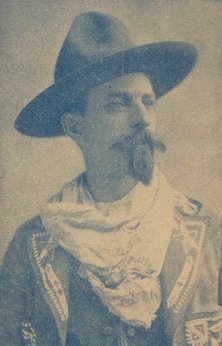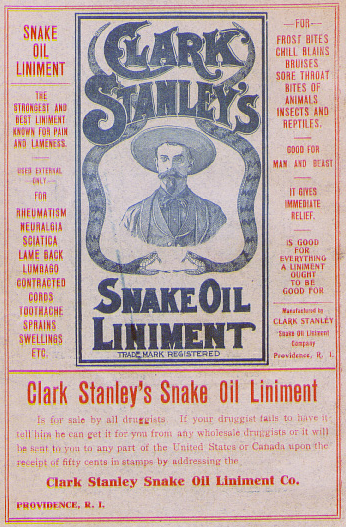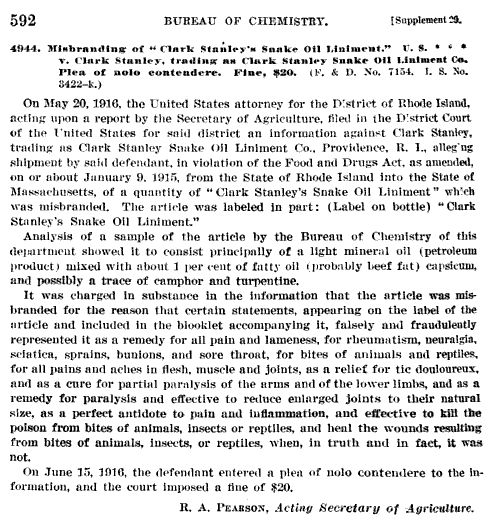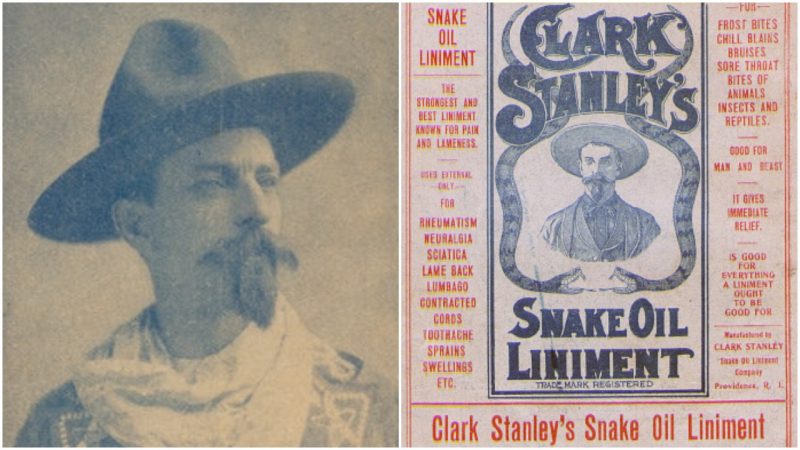Nowadays, the term “snake oil” is occasionally used to describe solutions to problems that turn up to be hoaxes or frauds. It is also used to describe substances that have no real value and are advertised as remedies for various ailments. The origin of the term actually originated in the late 19th century, as snake oil was once quite seriously promoted as a potent natural medicine.
Various fake medicines have been popular throughout history. Until the early 20th century, there were no regulations to prohibit false advertising of medicinal products, so quite a number of people made a lot of money by selling worthless and sometimes even dangerous substances to the unwitting people who sought cures for their physical troubles. “Medicine shows” were also popular: they were usually gatherings of hoaxers who presented a variety of patented medicines.

Patent medicines originated in the 18th century England, where a patent was granted to Richard Stoughton who promoted his cure-all simply named “Elixir”. From then on, thousands of various fake medicines were distributed to the public, often supported by tons of pseudo-scientific evidence.

Snake oil was a popular pseudo-medicine that appeared in the United States in the late 1800s. At that time, many Chinese laborers emigrated to America to work on the construction of the First Transatlantic Railroad. Many laborers spoke of snake oil, a traditional Chinese remedy used predominantly as a painkiller.
Clark Stanley, known as “the Rattlesnake King”, used these Chinese folk tales to mix a tincture which he advertised as snake oil, a potent painkiller used to treat arthritis and joint pain. He also claimed that he studied the effects of snake oil for two years with a Hopi medicine man in Arizona.

Stanley established production facilities in Massachusetts and Rhode Island and went on to become a successful businessman. He appeared at numerous medicine shows and demonstrated the extraction of the main ingredient of snake oil. He would kill dozens of rattlesnakes and milk their dead bodies to extract the oil.
However, the Pure Food and Drug Act passed in 1906 and many patent medicines were tested by government experts. Stanley’s snake oil was tested in 1916, and the tests finally ended his career of a successful businessman. The analysis has shown that Stanley’s tincture contained mineral oil, beef fat, red pepper, turpentine, and camphor.
Unlike many patented medicines of the time, it contained no dangerous substances, but it also didn’t contain any snake oil and had no medicinal properties.


The government sued Stanley for misbranding the product and ordered him to pay a symbolic fine of 20 dollars.
At that time the term “snake oil” became synonymous with a hoax, and it still remains in use.Still, Stanley’s recipe for snake oil is nowadays used in the production of some contemporary capsaicin-based chest rubs.
